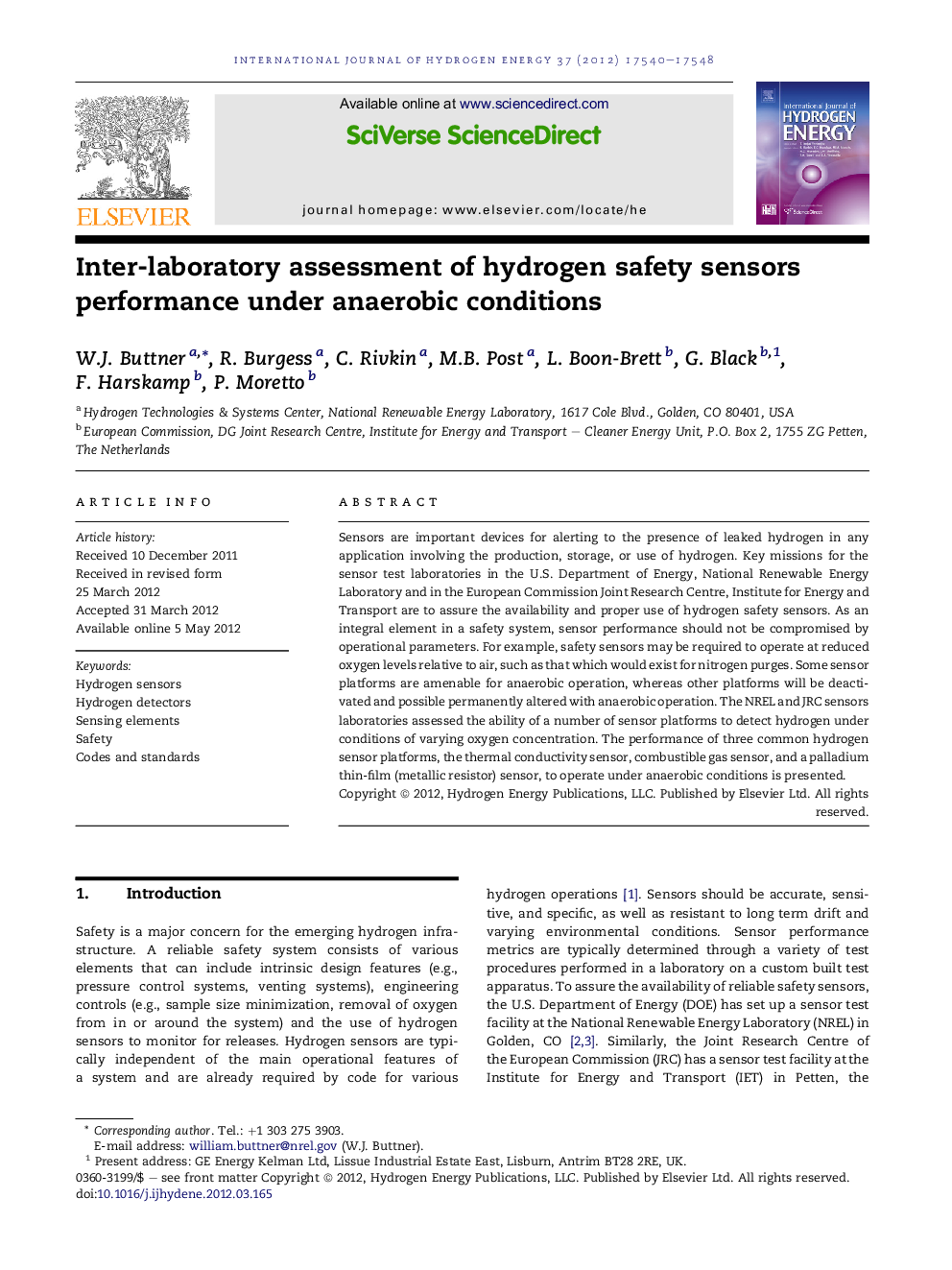| Article ID | Journal | Published Year | Pages | File Type |
|---|---|---|---|---|
| 1270942 | International Journal of Hydrogen Energy | 2012 | 9 Pages |
Sensors are important devices for alerting to the presence of leaked hydrogen in any application involving the production, storage, or use of hydrogen. Key missions for the sensor test laboratories in the U.S. Department of Energy, National Renewable Energy Laboratory and in the European Commission Joint Research Centre, Institute for Energy and Transport are to assure the availability and proper use of hydrogen safety sensors. As an integral element in a safety system, sensor performance should not be compromised by operational parameters. For example, safety sensors may be required to operate at reduced oxygen levels relative to air, such as that which would exist for nitrogen purges. Some sensor platforms are amenable for anaerobic operation, whereas other platforms will be deactivated and possible permanently altered with anaerobic operation. The NREL and JRC sensors laboratories assessed the ability of a number of sensor platforms to detect hydrogen under conditions of varying oxygen concentration. The performance of three common hydrogen sensor platforms, the thermal conductivity sensor, combustible gas sensor, and a palladium thin-film (metallic resistor) sensor, to operate under anaerobic conditions is presented.
► Compared hydrogen sensor types ability to operate under anaerobic and aerobic conditions. ► Verified that CGS are incompatible with anaerobic operation and can result in permanent changes. ► Demonstrated that the TC sensor net hydrogen response is not affected by anaerobic operation. ► Demonstrated that anaerobic operation does not affect response of PTF resistance sensors.
